All products featured are independently chosen by us. However, SoundGuys may receive a commission on orders placed through its retail links. See our ethics statement.
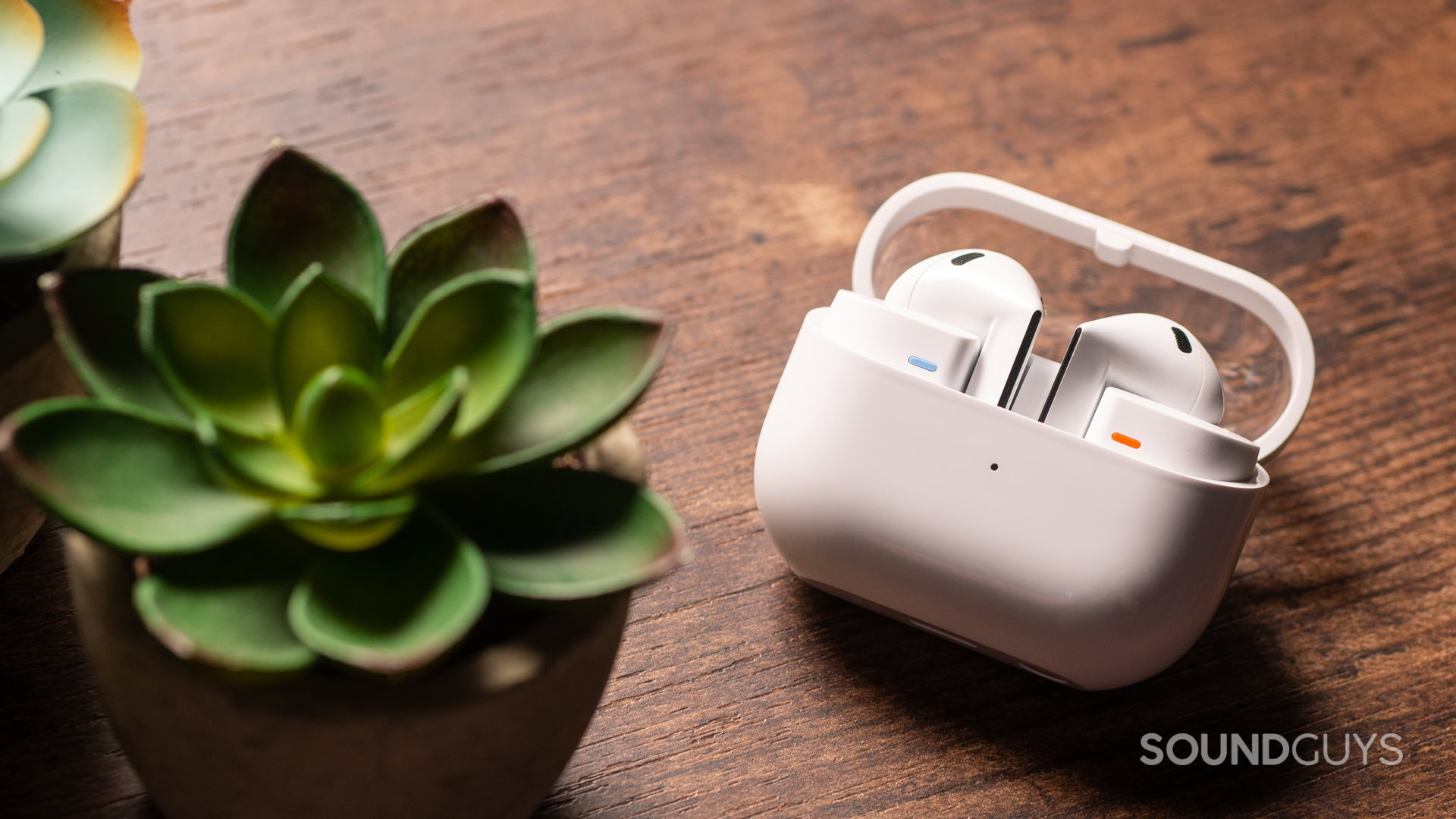
Samsung Galaxy Buds3 review
Published onJanuary 28, 2025
Samsung Galaxy Buds 3
Samsung recently took the wraps off two sets of somewhat-controversial earbuds. But do the Samsung Galaxy Buds3 deserve the criticism they’ve garnered, or is the situation rosier than it might seem? Both can be true, but let’s take a deeper dive into the world of unsealed earbuds.
- This review was updated on January 28, 2025, to update formatting.
- This review was published on August 14, 2024.
The Samsung Galaxy Buds3 are for people who want flagship earbuds, but don't want anything going into their ear canals.
What’s it like to use Samsung Galaxy Buds3?
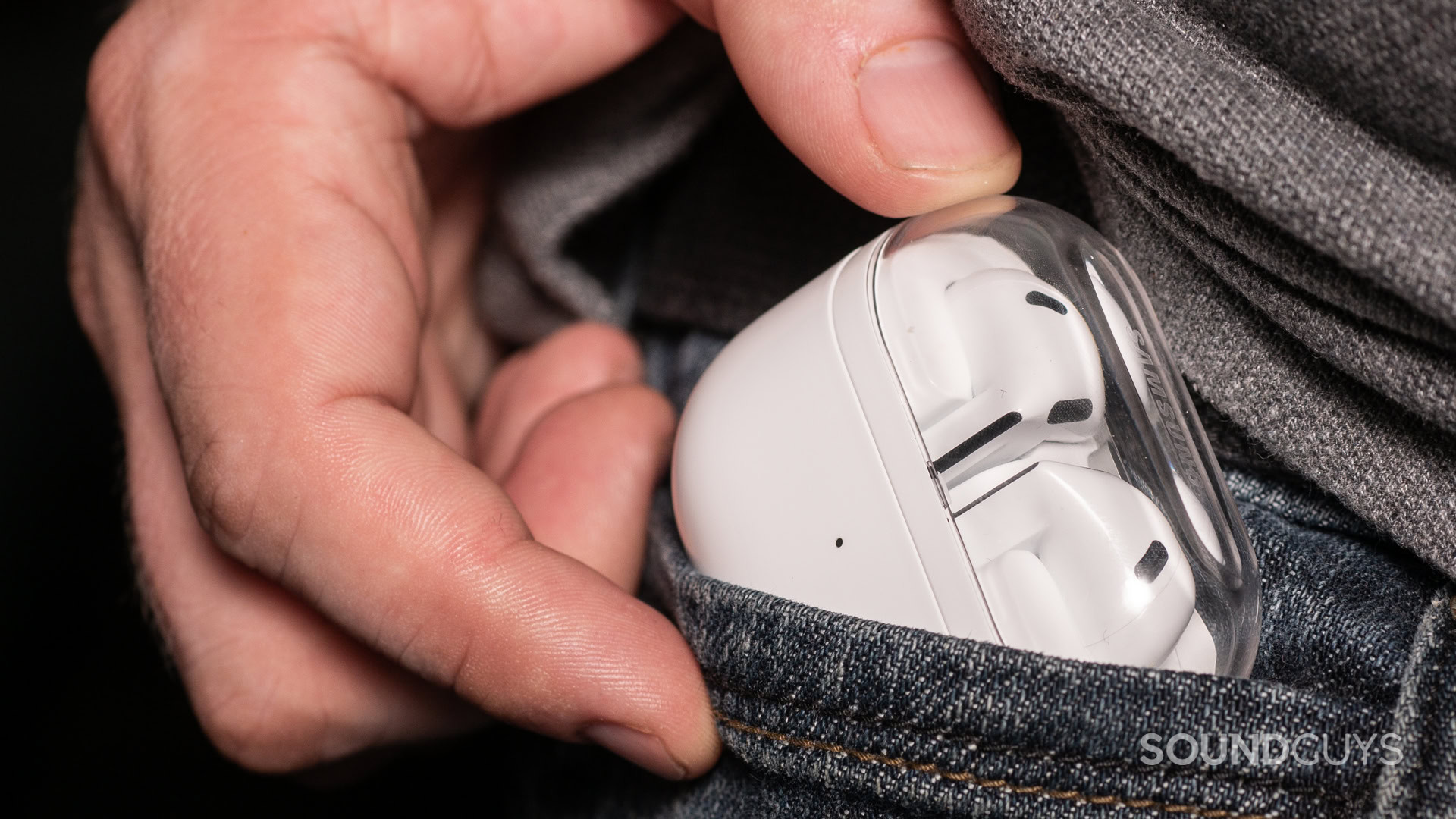
The Samsung Galaxy Buds3 are a rather familiar-looking affair, as they’re in many ways extremely similar to the Apple AirPods in design. For example, the unsealed ear, lollipop stem, and the odd bulbous earbud that sits in between your tragus and antitragus. This is also why there are going to be people who either love or hate the earbuds, as different ear shapes will be more conducive to getting a good fit, and there will be others that make a good fit impossible. Unless you know for a fact that the original AirPods fit you, I’ll probably steer you away from these earbuds.
Unfortunately, this also means that the Samsung Galaxy Buds3 come with many of the drawbacks of the original AirPods, as well. I had an absolutely miserable time with the Samsung Galaxy Buds3, as the inability to securely fit the buds to either my own head or the test robot meant that I could only get the earbuds working in ideal conditions for minutes at a time, if that. Though at first it was easy to keep the earbuds in my ears, after about 20 minutes, they started popping out without much explanation. I’ve been saying it for years, but earbuds that don’t do at least two things to guarantee a good fit (e.g. use a fin, hook, ear tip, grippy exterior, etc.) often won’t stay in place — and relying on gravity to hold earbuds in someone’s ears is simply bad design. If the earbuds you buy can’t handle a change in fit, movement, skin oils, sweat, or temperature changes, you’ve got a problem.
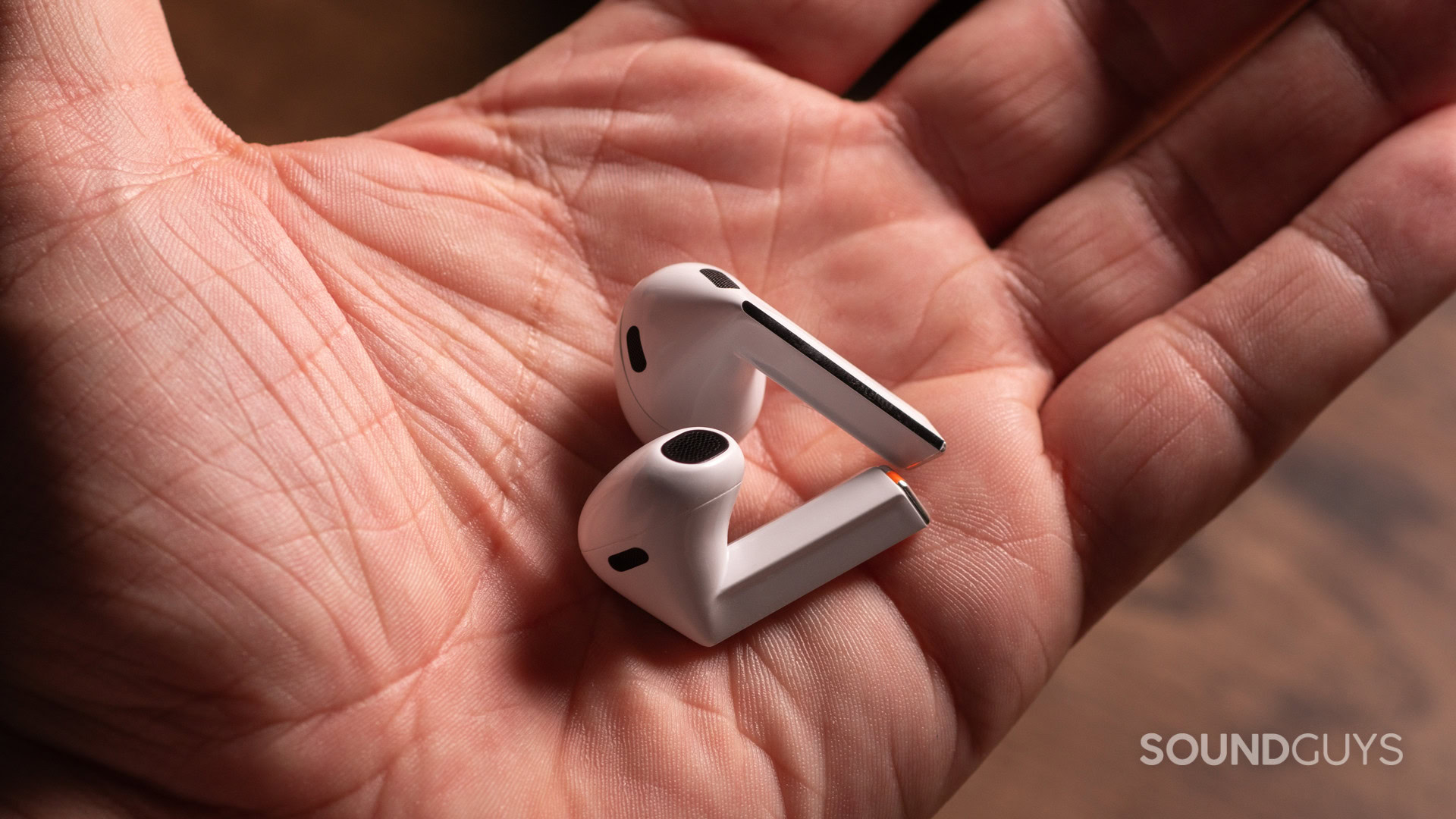
Inside the housings are 11mm drivers, though, unlike the Samsung Galaxy Buds3 Pro, there’s no planar magnetic tweeter. Still, the hardware is more than capable enough of matching what you’d expect Samsung earbuds to perform like. On the bottom of each earbud is a color-coded charging contact, so it’s easier to put them in the case correctly. The case is extremely easy to slide into a pocket — even a small one. The clear lid of the case is a nice touch, but the plastic seems a little on the soft side. So if you get the silver Samsung Galaxy Buds3, try not to scuff it up too badly. The case of the Samsung Galaxy Buds3 is virtually identical to the one offered by the Samsung Galaxy Buds3 Pro, including the bottom-oriented USB-C port, and wireless charging.
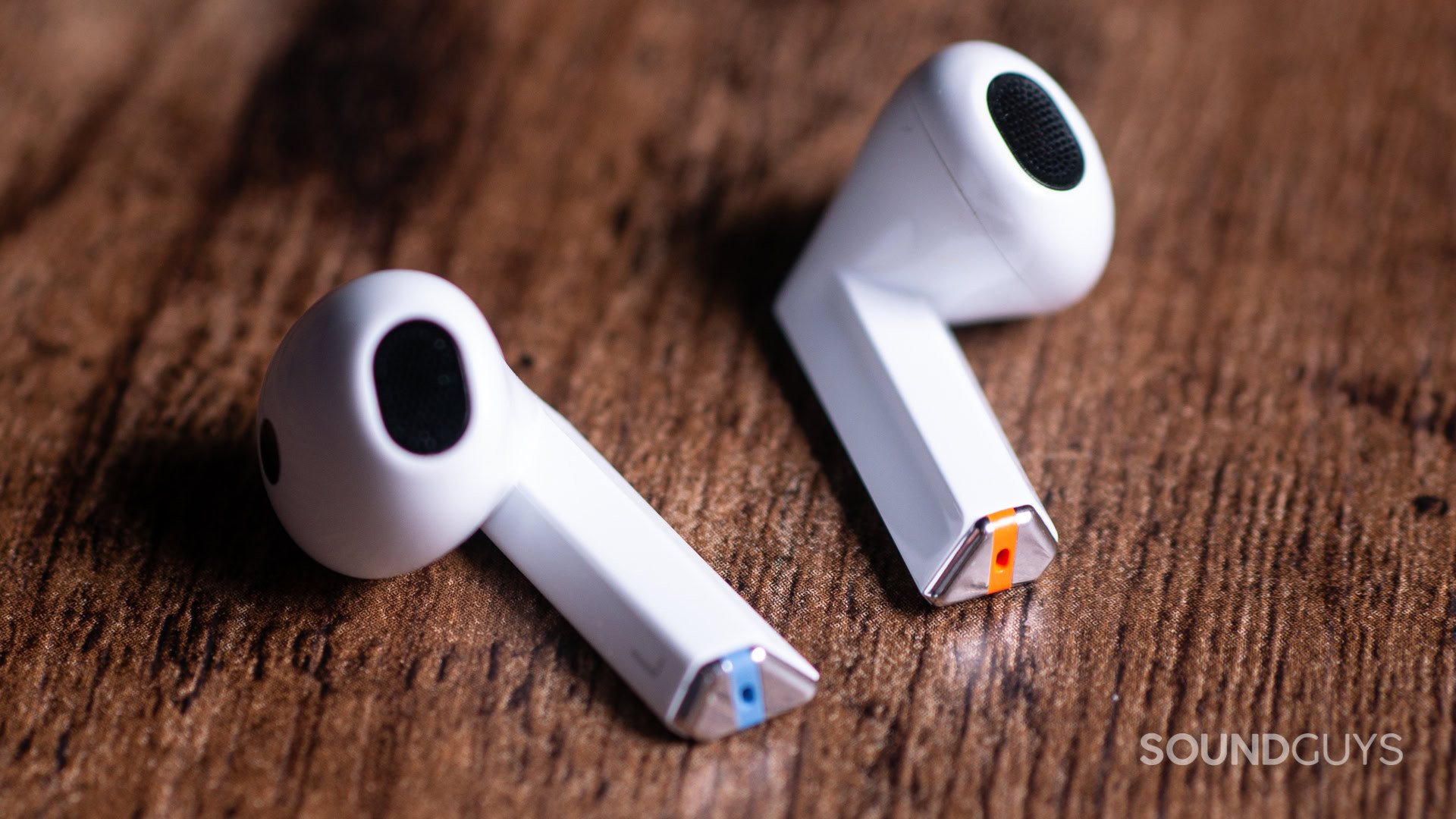
Just like the Samsung Galaxy Buds3 Pro, the Samsung Galaxy Buds3’s angular stem protruding from the bottom of the earbuds serves as your main control interface. Rather than using taps and swipes to control your earbuds, you simply pinch the lower-middle area in the “blade.” It’s pretty intuitive, but sometimes the force necessary to pinch the stem enough to register a command can dislodge the earbuds, requiring a re-fit.
A lollipop stem that slides through your tragus and antitragus isn't enough because it doesn't have any means to push the front of the earbud forward and hold it to your ear canal.
Workout fanatics might appreciate the IP57 ingress protection rating, but the fit issues mean that vigorous movement might drive you nuts if the earbuds fall out. Even if they don’t fall all the way out, it can still cause issues, so make sure that the ear-detection sensor is always flush against your ear if you can.
If you’d like to control your playback from the earbuds and not your phone, you can use the lollipop stems on either earbud. Just be aware that you need to pinch them for most commands, slightly below the center of the stems.
| Input | Left earbud | Right earbud |
|---|---|---|
| Input Slide up / down | Left earbud Volume | Right earbud Volume |
| Input Pinch once | Left earbud Play / pause | Right earbud Play / pause |
| Input Pinch twice | Left earbud Track forward | Right earbud Track forward |
| Input Pinch three times | Left earbud Track backward | Right earbud Track backward |
| Input Long pinch | Left earbud ANC | Right earbud ANC |
Though the white version of the Samsung Galaxy Buds3 looks remarkably like the Apple AirPods, it is entirely probable that the Samsung Galaxy Buds3 were designed without Apple’s earbuds in mind. If I were to hazard a guess, I’d say the most likely explanation behind why the Samsung Galaxy Buds3 look so much like AirPods is that the designers wanted to build on the successes of the Samsung Galaxy Buds Live, but in a more familiar form factor to the mass market. But where the Live used a two-point contact system to guarantee a fit, the Samsung Galaxy Buds3 don’t.
Apparently, I’m not the only one to take issue with this. Samsung had previously used sealed nozzles and your ear’s concha to hold its buds in place, sometimes even using a fin like the Samsung Galaxy Buds FE, but that’s conspicuously absent here. In the lab, I had to fashion my own concha fin to hold the buds in place for the ideal measurement because they would slip out of the ear otherwise. It’s a glaring problem — one that might actually be solved by the cottage industry of AirPods fit enhancers.
Should you use the Samsung Galaxy Wearable app for the Samsung Galaxy Buds3?
If you own an Android phone, you’re going to want to install the Samsung Galaxy Wearable app for the Samsung Galaxy Buds3, if only because that’s the best way to access basic controls of the earbuds. For example, the ANC toggle, EQ presets, the AI features, and firmware updates. For the privacy-conscious among you, the list of permissions the app forces you to accept before working as intended is quite dizzying, but it’s unclear that you have much to worry about here.
In the past, Samsung has been pretty decent at getting firmware updates out the door when they’re needed. With the app, you can even tell your phone to update in the background so you don’t have to deal with manually installing anything. It’s a nice creature comfort, even though it’s a minor one.
How do the Samsung Galaxy Buds3 connect?
As the Samsung Galaxy Buds3 are a set of truly wireless earbuds, it shouldn’t be surprising that they use the latest Bluetooth 5.4 to connect to source devices. You can connect over SBC, AAC, or Samsung Seamless Codec. The latter boasts near-lossless listening, though you’ll need a very current Samsung phone in order to make the most of this. If you don’t have one of the latest Samsung phones, you’ll be limited to SBC or AAC.
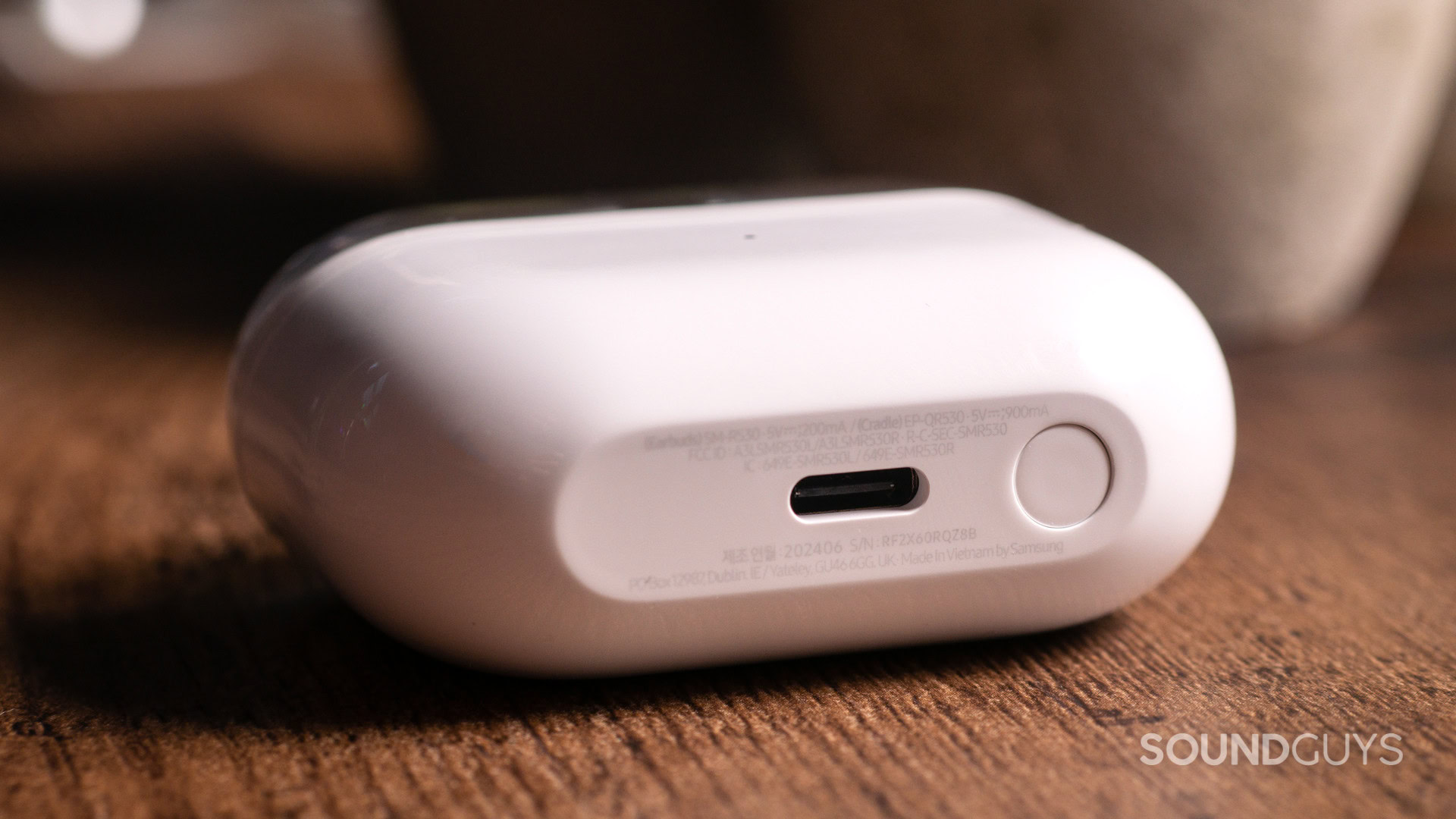
The earbuds support Multipoint, AI features, and a number of creature comforts that are available to you through the app. However, like the advanced codec support, you will need a current Samsung phone to make the most of the AI features like Live translation and interpretation.
If you don’t want to connect over Fast pair/Swift pair, you can pair the earbuds manually by using the pairing button on the bottom of the case.
- On your source device, open the Bluetooth menu and scan for new devices.
- Place the Samsung Galaxy Buds3 in the case and hold down the pairing button.
- Once the case’s LED starts cycling through the red, blue, and green flashing lights, look for the Samsung Galaxy Buds3 in the available devices screen.
- Tap the Samsung Galaxy Buds3 option. The device should then pair.
How long does the Samsung Galaxy Buds3 battery last?
With ANC enabled, we were able to squeak out 4 hours and 56 minutes of playback, while turning off the ANC saw the Samsung Galaxy Buds3 withstand our battery test for 6 hours 20 minutes. Though this might not seem all that impressive, the truth of the matter is that this places the Samsung Galaxy Buds3 squarely at a more-or-less average battery life, and it’s more than good enough for commuting to and from work. Just avoid using these on long-haul intercontinental flights and you’ll be fine.
Samsung does not list a fast charging figure on its product page, but small batteries tend not to take all that long to charge anyway. Even a short top-up should get you a significant amount of listening time if you need it right away.
How well do the Samsung Galaxy Buds3 cancel noise?
Unsealed earbuds are by far and away the most difficult audio products to measure, because in addition to fit difficulties, you also have to avoid tainting your results because isolation is not something you can count on. In the lab, the fit issues I highlighted earlier meant that I had to get creative with ensuring the best possible positioning, but there was only so much I could do before my attempts to fix the fit would create tainted results. I realized that if our test head’s anatomy, based on the average of 40 peoples’ ears, can’t fit these earbuds: it’s possible that the busted fit is just what many people will experience. Situations like this one were exactly why we wanted a more anthropomorphically correct test apparatus in the first place.
The best result I was able to achieve without stuffing duct tape, foam, or other fillers into the ears (which would have interfered with the results) was the following. I may take another stab at this with fishing line, but that’s a project for another day.
Loading chart ...
Obviously, this isn’t ideal, and I know that most people will experience better results at the beginning of their listening sessions should the earbuds fit them well. I know that when the earbuds fit perfectly at the beginning of my trip, the ANC appeared to be far more effective than this. I found the noise attenuation to be respectable but not amazing. However, that lasted all of 30 seconds in my case — nowhere near long enough to perform this test in the lab. Additionally, there’s an issue I ran into with the sensor not always believing the earbuds are actually in your ears — and when that happens, ANC is automatically disabled. If the fit gets a little wonky from sweat, skin oils, or movement, the ANC will sometimes drop out in one channel as the ear sensor will report that the earbud isn’t in your ear any longer. That happened to me a few times on my trip into the office from my house, and I have to say, it’s frustrating. A more typical result is what’s shown above. These aren’t going to be going on our list of best ANC earbuds anytime soon.
How do the Samsung Galaxy Buds3 sound?
Here, too, your fit will determine how well you perceive the performance of the Samsung Galaxy Buds3. And the dropoff from “ideal” to “typical” is huge. When the fit is good the sound is good, but that can change.
Multi-Dimensional Audio Quality Scores (MDAQS)
The chart below shows how the sound of the Samsung Galaxy Buds3 was assessed by the Multi-Dimensional Audio Quality Score (MDAQS) algorithm from HEAD acoustics.
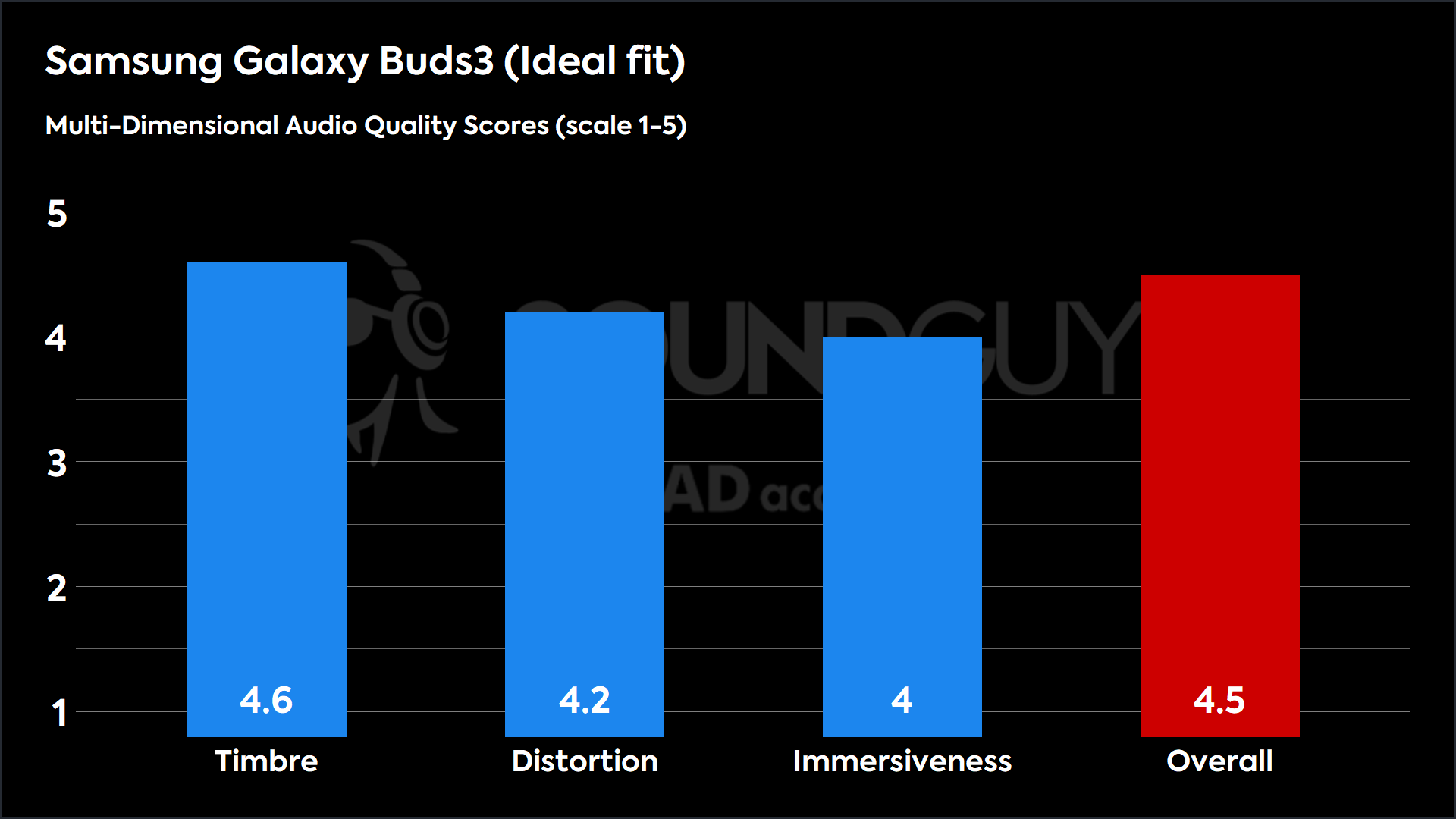
With the best fit I was able to achieve, the Samsung Galaxy Buds3 fared decently well with Multi-Dimensional Audio Quality Scores. Through pleasing Timbre, Distortion, and good Immersiveness mean opinion scores (MOS), the buds posted a respectable 4.5 overall, meaning that most people will find the sound to be pretty decent. Should you get a good fit, there shouldn’t be much to complain about in the audio quality department.
But that’s a big “if.”
Because the earbuds tend not to stay in your ears all that well in the presence of skin oils and moisture, they tend to get dislodged pretty easily for many people. In fact, most might assume that the performance while semi-dislodged is intended behavior. It’s not, and we can see just how much sound quality takes a hit when this happens. These earbuds are insanely hard to measure, so take the below with the understanding that this is the lower bound of what you should expect.
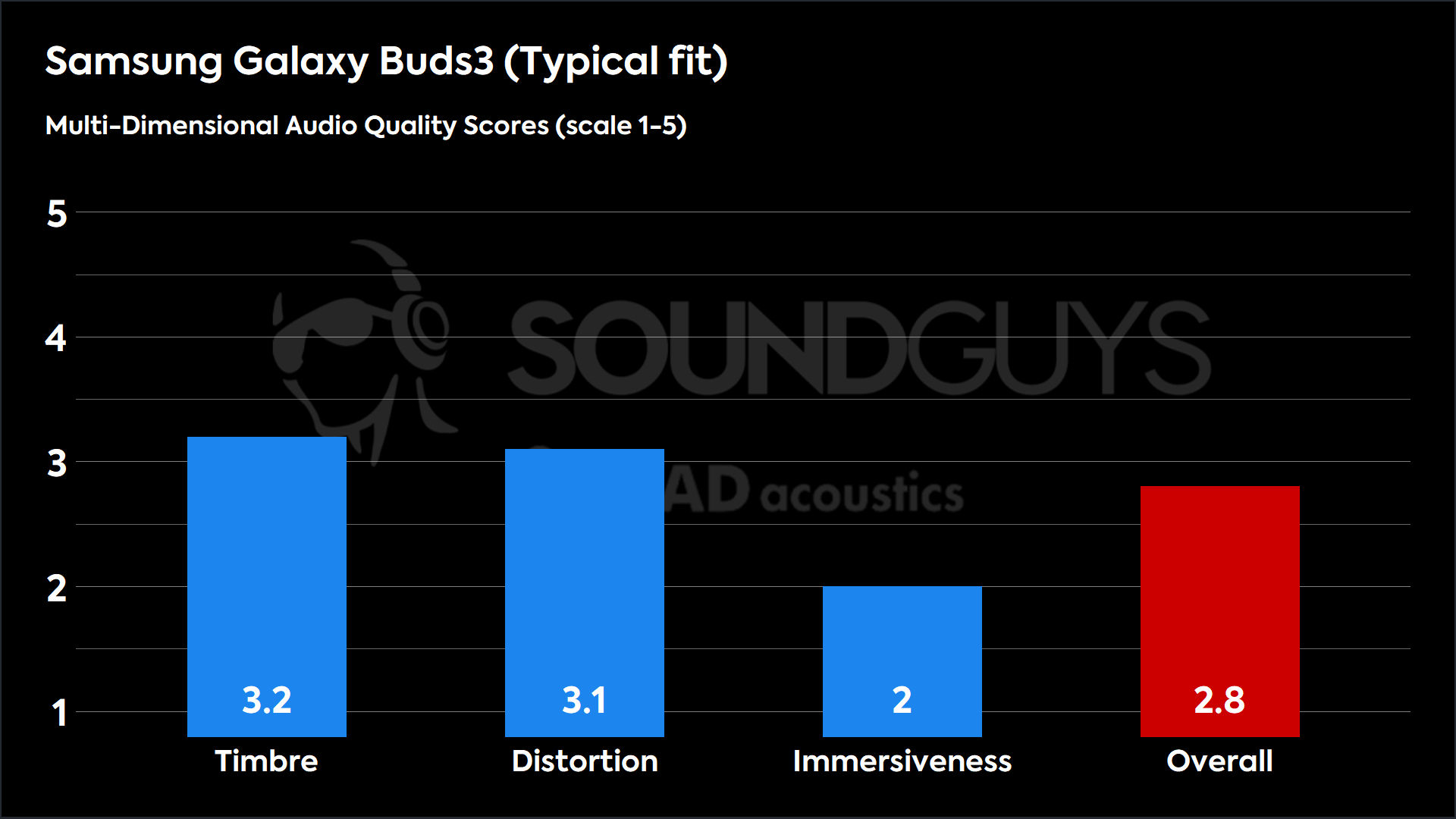
Woof. With an overall score of 2.8, the simulated panel of listeners would most likely prefer to listen to something else in the event that the Samsung Galaxy Buds3 get dislodged in the ear. While this is a more typical fit for our head, it’s not a given that you’ll experience this, so just keep this in mind as a sort of performance floor of the earbuds. It’s more likely that you’ll hear better results than this, so don’t let the results here spook you too much.
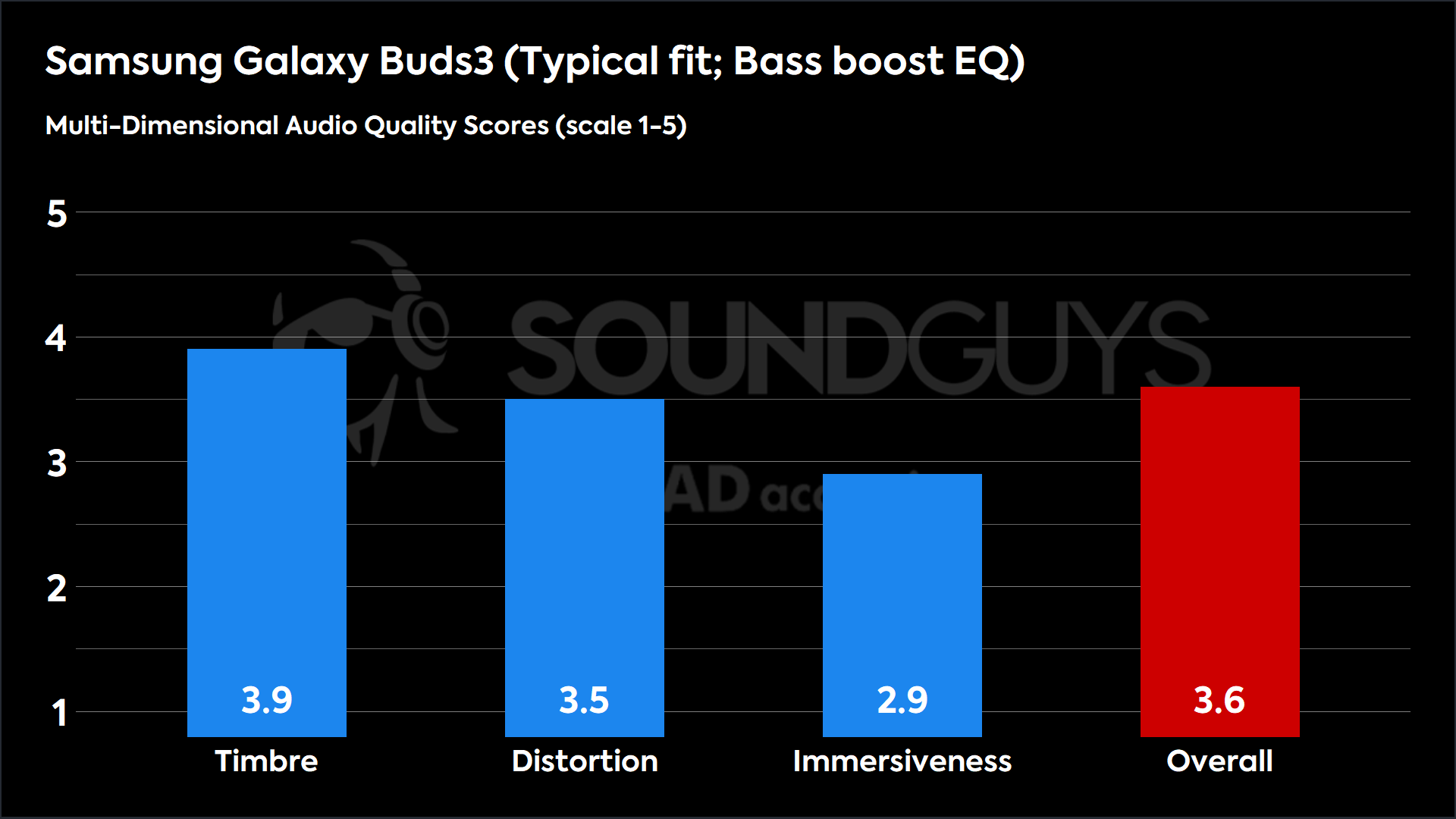
Using the Bass boost EQ preset can help significantly, but with a poor seal, there’s only so much this can be covered for. Toggling this setting moves our virtual group’s assessment of audio quality to 3.6 — firmly in the “okay” territory, but still not great.
- Timbre (MOS-T) represents how faithfully the headphones reproduce the frequency spectrum and temporal resolution (timing information).
- Distortion (MOS-D) represents non-linearities and added noise: higher scores mean cleaner reproduction.
- Immersiveness (MOS-I) represents perceived source width and positioning: how well virtual sound sources are defined in three-dimensional space.
Reviewer’s notes
I’m going to preface the following with the fact that the Samsung Galaxy Buds3 are very capable earbuds, and that the deficiencies in performance are almost entirely due to fit and not the internals. It isn’t difficult to get good results with the Samsung Galaxy Buds3, but it is difficult to maintain that level of performance without adjusting the fit every so often. However, just like it was with the original AirPods, so, too, do Samsung’s unsealed earbuds suffer in somewhat predictable ways.
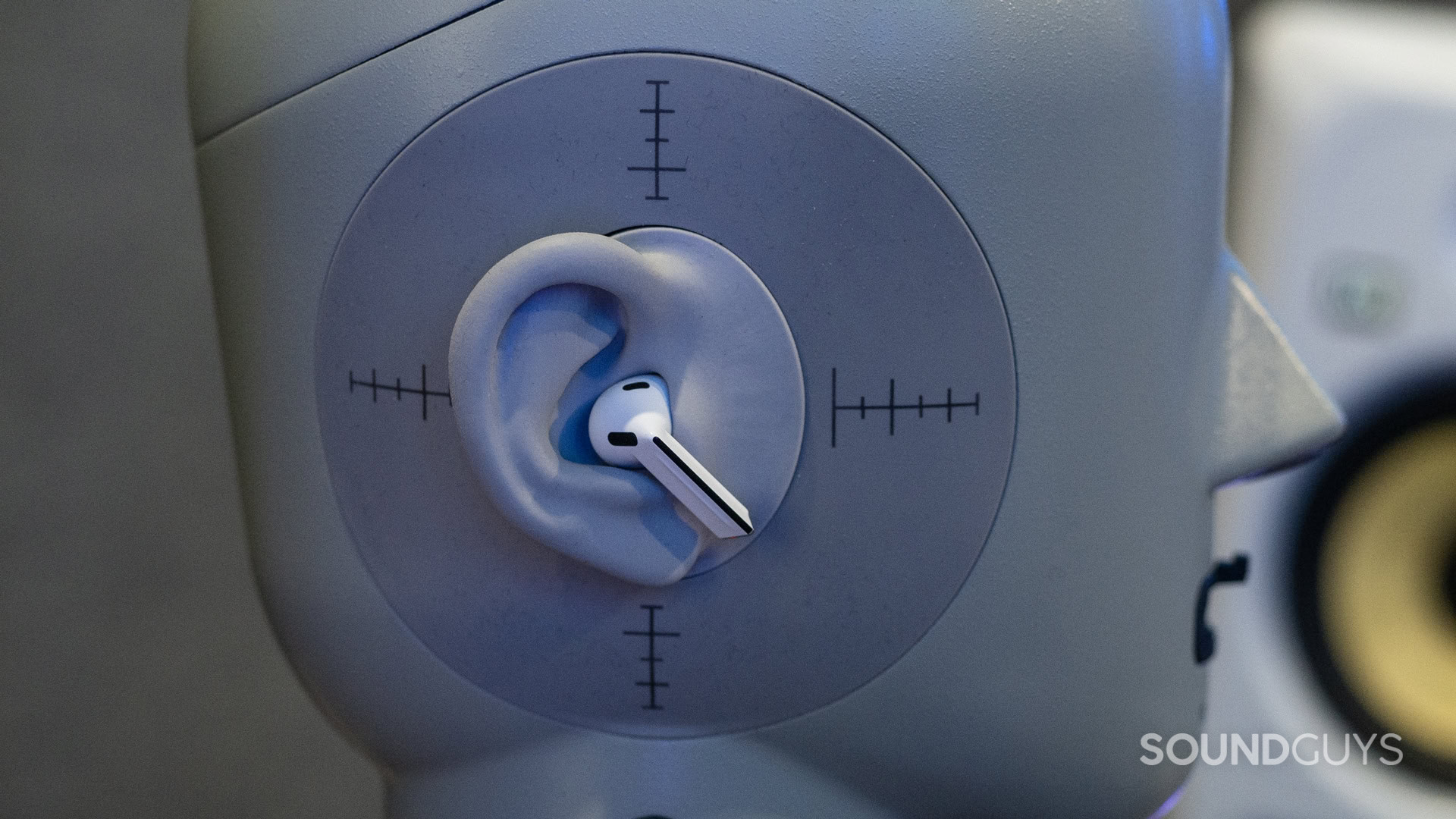
Using the Treble Boost EQ preset through the Samsung Galaxy Wearable app, I got pretty solid results in my day-to-day listening. Though the default profile does tend to make a bunch of sibilants, cymbals, and fricatives sound a little odd, overall the earbuds did just fine when in ideal conditions.
But “ideal conditions” are a little tough to define and achieve. For one thing, you can’t just torque the buds into your ear canal, as there’s no ear tip. If you do that, then you’re going to hurt your ears. Similarly, leaving the earbuds to their own devices would mean that your fit might change over time. In the lab, I would watch in horror as the data output of our testing system showed a slowly changing fit, the bass dropping by 3dB at a time with every subsequent sweep (every minute or so), until the buds popped out of the head. I solved this by fashioning little concha fins out of spongy foam, and that seems to have done the trick for the best-case-scenario measurements.
Objective Measurements
Our lab uses the Bruel & Kjaer 5128-C, a wonderful test head that approximates how a human hears sound with just about any device a human head can listen to. Though this fixture is newer, the biggest advantage it offers is that any common issues a normal human being might run into with headphones and earbuds. For example, the ear canal has a more realistic shape instead of a perfect cylinder, so we can see how that affects product performance. In the case of unsealed earbuds like the Samsung Galaxy Buds3, that often means that common fit issues that might not be present with other measurement rigs are nearly impossible to avoid.
However, that gives us an interesting problem: How do you fairly assess earbuds that simply don’t fit many people, even though their components are technically capable enough to perform better than you’d see on an initial test?
I decided pretty early on that I would attempt to get the best result I could, and I would also take measurements showing what a busted (unassisted, stable) fit would look like. That way, it’s easier to understand what’s going on when you aren’t getting the results you expect.
Ideal fit:
Loading chart ...
Here we see a solid response, with slightly elevated bass and low mids. Highs get a little wobbly in places, making the high peak at about 8kHz a little out of place, but it mainly manifests as some higher-frequency sounds like some echoes or string attack sounds being a bit easier to ear over the din of other instruments. It’s one of those things that might get grating after a while with a good seal, but that’s not a guarantee here.
While this isn’t exactly my cup of tea, it’s a respectable, consumer-friendly sound that doesn’t have many obvious deficiencies. You should be able to get results like these with some careful positioning, but if your ear anatomy is like mine, be careful not to sweat or move around too much.
Typical fit:
Loading chart ...
When we compare these results to what we posit is a good benchmark for frequency response, we see that bass falls off considerably, treble is over-emphasized, and it’s very tough to see how this would be pleasing to anyone with more than a passing interest in audio quality. For example, the background synth melody in Muse’s “Knights of Cydonia” just can’t be heard unless you’re listening at a very high level.
Additionally, this kind of emphasis can make many songs with high-frequency content sound a little thin, and bass lovers won’t find much respite in the “bass boost” EQ setting either. I should point out that this all looks way worse on a chart than it sounds in real life, given that sub-bass accounts for a lot less of a song than you might realize. Still, it’s frustrating that your experience can vary so much depending on how these earbuds sit in your pinnae.
Clear EQ Preset
Loading chart ...
This preset touches down sub-bass by about 5dB and bumps up 2-44kHz before leveling off.
Dynamic EQ Preset
Loading chart ...
This preset boosts vocals and the highest highs considerably, but not enough to ruin anyone’s day.
Bass Boost EQ Preset
Loading chart ...
This preset, true to its name, boosts bass a little bit.
Treble Boost EQ Preset
Loading chart ...
Similarly, the treble boost preset gives you comparatively higher levels of treble over bass.
Smooth EQ Preset
Loading chart ...
This EQ preset boosts 100-400Hz a bit to enhance vocals and low-to-mid instrument sounds, while touching down the highest octave a bit.
Loading chart ...
Though the response of the Samsung Galaxy Buds3 changes with the ANC off, I’m unable to guarantee that this isn’t the result of a changing fit over time because of the design challenges suffered by the buds. If I had to hazard a guess, any change in performance with the ANC turned off is going to be less noticeable than whatever variance you’d run into on a normal day just from changing fit alone.
Can you use the Samsung Galaxy Buds3 for phone calls?
Yes, the Samsung Galaxy Buds3 can be used for just about any call application. If you’d like to hear what the microphones are capable of, take a listen below.
Samsung Galaxy Buds3 microphone demo (Ideal conditions):
How does the microphone sound to you?
Samsung Galaxy Buds3 microphone demo (Office conditions):
Samsung Galaxy Buds3 microphone demo (Street conditions):
Samsung Galaxy Buds3 microphone demo (Windy conditions):
Samsung Galaxy Buds3 microphone demo (Reverberant space):
It seems as though the Samsung Galaxy Buds3 require the use of Samsung’s app and/or phones to really get the most of the noise rejection of the microphones. I say this because the Samsung Galaxy Buds3 don’t seem to attempt to reduce outside noise much at all — though the mic quality is quite good.
Should you buy the Samsung Galaxy Buds3?
No, I don’t recommend buying the Samsung Galaxy Buds3. But if it’s any consolation, I say the same about the original unsealed AirPods, too.

I’m aware that some outlets are reporting that the design of the latest Galaxy Buds has led to some behind-the-scenes strife, and I really don’t want to pile on. But true wireless earbuds as a category is more than a decade old at this point — how the lessons of the original AirPods’ design haven’t been learned at this point baffles me. Samsung’s Galaxy Buds line, especially the Samsung Galaxy Buds 2, had a lot of really good design decisions, so what the heck happened?
I don’t like writing negative reviews, especially when it takes thousands upon thousands of workers’ hours to design, build, manufacture, and market earbuds. I don’t want to minimize these Herculean efforts. But I don’t like these earbuds, they have a serious design drawback, and I won’t recommend them very often because of it. I said the same of the original AirPods, and I stand by it — unsealed earbuds that don’t have a secondary positioning feature like an ear hook or concha fin just can’t be relied upon to fit well as often as earbuds that seal to your ear canal.

Sure, there will be plenty who like these earbuds, and if you’re among them, more power to you. I cannot stress enough how much I’m not trying to make people feel bad about their purchases, because that’s not fair — nor is my experience going to be the same as everyone else’s. But if you’re looking for a set of earbuds that sound great and ANC that makes your commute tolerable: these aren’t it.
What should you get instead of the Samsung Galaxy Buds3?
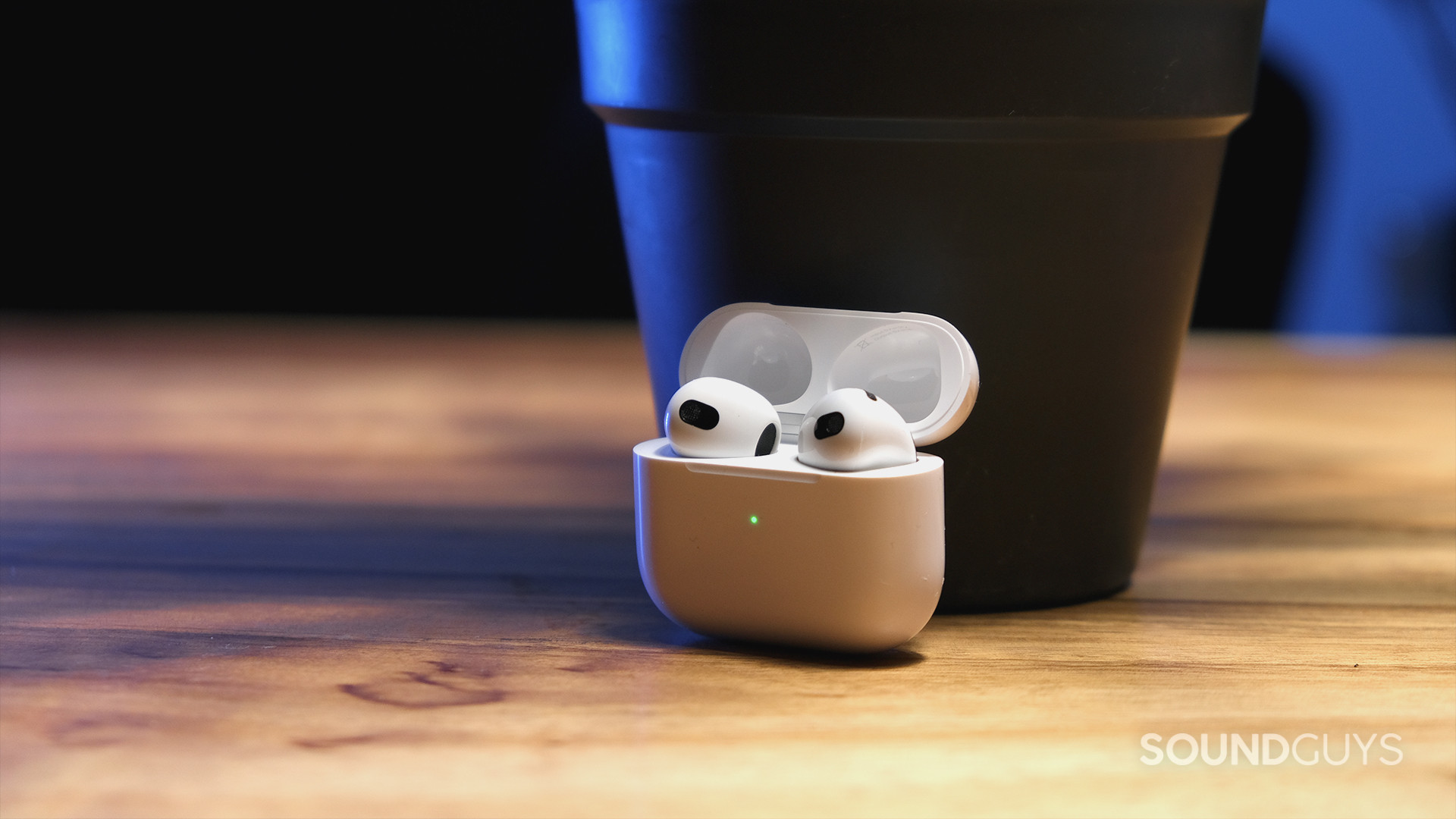
If I were to pick direct competitors to the Samsung Galaxy Buds3, you probably have a good idea that the Apple AirPods (3rd Gen.) ($195 at Amazon) are at the top of that list. If unsealed earbuds are your jam, then these are what most people are going to look to as a main alternative. You’ll probably only want to pick them up if you have an iPhone, however, as many of the more advanced features are iOS-only, whereas the Samsung Galaxy Buds3′ AI features are Samsung exclusives. The audio quality is roughly on par, but only in ideal conditions. The Samsung earbuds are better at ANC, which is a feature the AirPods don’t have. You can find out more in our full Samsung Galaxy Buds3 vs Apple AirPods (3rd generation) comparison.
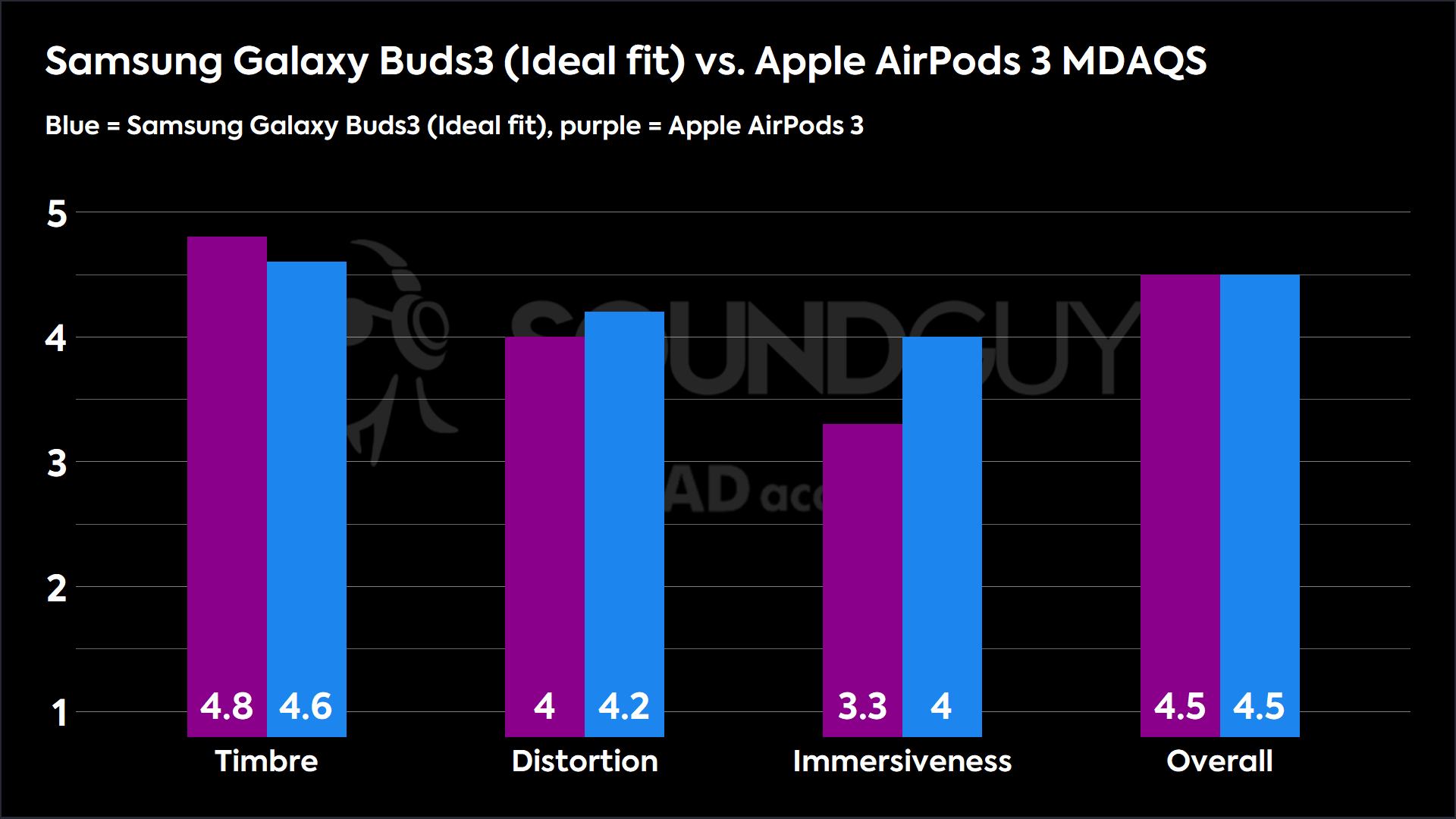
If you absolutely can’t have anything in your ear canals, you might want to try a set of bone conduction headphones instead of the Samsung Galaxy Buds3, as those will not only leave your ears unoccluded, but they’ll also allow you to not worry so much about fit — there’s almost zero chance you’ll knock a set of those off your head unintentionally. You could also look to other sets of open earbuds, but again: these also have pretty pronounced issues with sound quality and fit. If you can still find them, the Nothing Ear (Stick) ($64 at Amazon) was liked by our staff, though they aren’t perfect either.
For those who are attracted by the ANC, I strongly suggest you check out what else is on the market, because there’s plenty. Personally, I recommend looking for the Samsung Galaxy Buds FE ($99 at Amazon) if you don’t need any AI stuff, because those buds fit a lot better than the Samsung Galaxy Buds3.
Galaxy Buds3 vs Galaxy Buds 3 Pro
Frequently asked questions
The Samsung Galaxy Buds3 bear an ingress protection rating of IP57, which means they can theoretically handle a quick dunk into water. Just don't leave them there, or pretend as though they'll work when you take a swim, however.
Yes.
Not out of the box. You'd need some sort of dongle to square with the lack of Bluetooth.
While the Samsung Galaxy Buds3 offer ANC while the AirPods do not, calling either product better than the other is a fool's errand.
No. Sweat makes these fall out of ears like nobody's business.
Yes.